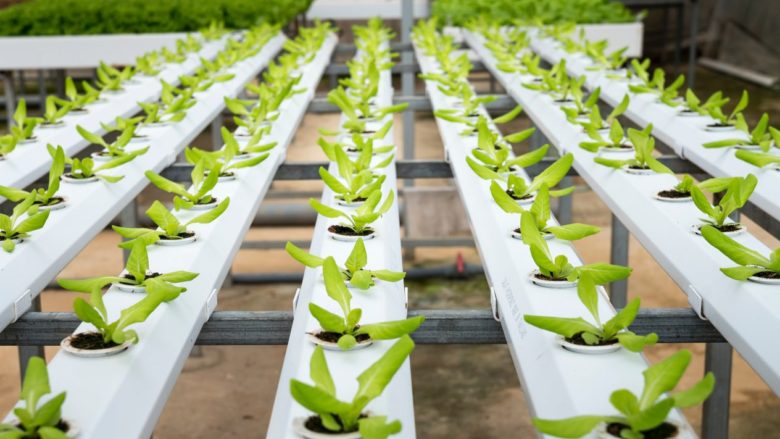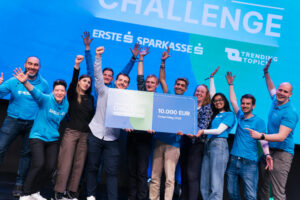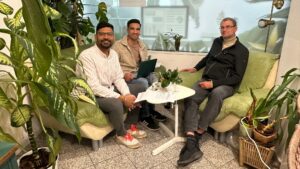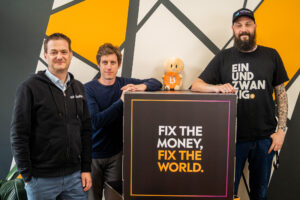Laboratory meat, 3D printing & Co. – This is what we will eat in the future

From the field or stable to your own plate – this is the traditional way of producing food. However, this is supplemented bit by bit by new trends. And it has to. The world population is growing steadily and, combined with the consequences of the climate crisis, the number of people who run the risk of starvation is also growing. As early as 2020, the United Nations recorded a sharp increase in the number of people suffering from hunger. According to a UN report, around a tenth of the world’s population – up to 811 million people – were undernourished in 2020.
The authors of the report do not expect this trend to turn away in the future either. It is actually anchored in the Sustainable Development Goals (SDGs) of 2015 that no one should suffer from hunger by 2030. So far, however, the achievement of the goal is a long way off. According to the latest UN report, the international community will miss the target by around 660 million people so far.
Therefore, immense work is being done around the world to make new forms of agriculture and food production fit for practice – and for the future. We will present some of them here in more detail.
These are the current future foods trends:
In-Vitro Food
Less animal suffering, fewer farms, and therefore fewer CO2 emissions – meat that is grown in jars is a promising trend when it comes to food. The principle sounds simple: the laboratory meat is bred from stem cells from farm animals. These are taken as tissue samples from the respective animals by biopsy and later isolated in the laboratory. According to the company, the removal is painless for the animals and the removed stem cells can then be reused in large numbers. The stem cells are applied to a support structure and supplied with a nutrient medium in a bioreactor so that they multiply and then develop into muscle and fat cells in another bioreactor.
Many companies have jumped on the in-vitro hype and are now cultivating meat in the laboratory. As a first step, the startups Mosa Meat (Netherlands) and Mirai Foods (Switzerland) have specialized in cultured minced beef. Other companies such as Eat Just and Upside Foods from the USA want to produce more chicken products from the jar instead.
READ MORE: In-vitro meat as a climate saver? 7 questions & answers about cultivated meat
Laboratory meat from glass is not yet widely available on the market. In December 2020, in-vitro meat received a sales permit for the first time with the laboratory-produced chicken nuggets of the American food manufacturer Eat Just in Singapore.
The fact that the products have not yet caught on is mainly due to the still very high manufacturing price. But the potential for the environment is great: According to a study by the Universities of Oxford and Amsterdam, laboratory meat could use up to 99 percent less floor space and 82-96 percent less water compared to conventional animal husbandry. So that the first meat from the laboratory can also be consumed in Europe, a product that is ready for the market is required, which then has to be tested accordingly and approved by the food authorities. In-Vitro-Products would then fall under the “Novel Foods” regulation of the EU.
The hype about food “out of the jar” is not limited to meat products. Other products can also be produced using stem cell technology. The Berlin startup Bluu Biosciences, for example, works on fish cultivated in the laboratory. The Singapore startup TurtleTree, on the other hand, is working on wholesome milk from the bioreactor so that it can be used to produce baby food and cheese. The developments show that the in-vitro trend will continue to bring more products out of the cradle in the years to come.
Vertical farming
Vertical farming is seen as an option to guarantee the supply of fresh food in the growing cities. This saves cultivation areas, and green areas on building facades provide cooling in summer. In addition, water and pesticides are saved.
Many companies have already specialized in making vertical farms big. At the beginning of the year, the Singularity Hub portal reported that the largest vertical farm in Europe had been built in Taastrup, not far from Copenhagen. Over an area of 7,000 square meters, the plants will grow in vertical stacks. The Danish food tech company Nordic Harvest is behind this project. In the US, Vertical Harvest is combining vertical farms with affordable housing. The German startup Infarm has devised small-scale vertical farms and places fields for lettuce and herbs directly in the supermarket. The Burgenland startup Phytoniq? has been working on a breakthrough in indoor farming since 2017.
READ MORE: Urban gardening in SEE: Ready to pay to sweat for some good food in the city?
According to Reuters, vertical farming is currently experiencing a massive boom. In the past, companies in this field have found it difficult to become profitable. Today the necessary technology, such as LED lamps, is much cheaper. The US market research institute Brandessence assumes that the vertical farming market will grow to 8.5 billion euros by 2027.
Insects
Insects are considered to be the food source of the future. While grasshoppers or yellow mealworms are not necessarily on the menu in western industrialized countries, the FAO estimates that two billion people around the world already regularly consume insects. Many people believe that insects are ideal for securing food for the world’s growing population. They are considered to be good suppliers of nutrients, save space in breeding and release far fewer greenhouse gas emissions than is the case, for example, in cattle breeding. In May 2021, the mealworm was first approved as a novel food by the EFSA (European Food Safety Authority).
READ MORE: Romanian agrifood tech startups have raised over $4m funding in two years
The edible insect hype has already sprouted a number of companies. In autumn 2020, the French startup Ÿnsect raised EUR 316 million with which the company plans to build the world’s largest insect farm, which is due to open in the French city of Amiens in 2022. The Viennese startup Zirp Insects has made a name for itself with nibble insects, sports nutrition, and burger patties. The startup Livin Farms is also working on breeding insects as the food of the future, as a meat substitute, and source of protein. In the future, however, insects will also serve as food for others: The German startup EntoNative wants, for example, dog food with its Tenetrio brand from insects. The Upper Austrian startup Ecofly wants to increasingly establish insects as fish feed.
According to a report published earlier this year by the market research company Meticulous Research, the edible insect market is expected to be worth four billion euros by 2027.
Precision Fermentation
Cheese, only vegetable and deceptively real in taste. This is the result of the so-called precision fermentation process. This is a biotechnological process in which microorganisms are programmed in such a way that almost any complex organic molecule, e.g. proteins, fats or vitamins, can be produced. A microbial host, for example, yeast or fungi, which is used as a cell factory, serves as the starting point.
The Berlin startup Formo, for example, has used yeast cells to recreate the genes that produce the milk proteins casein and whey protein in cows, so that they start to produce milk proteins. They then supplement these proteins with vegetable fats, carbohydrates, and salt in order to produce a concentrate that then forms the basis for making cheese. The first animal-free cheese from Formo is expected to hit the market in two years’ time, and by 2025 this should be in the same price range as other traditional cheeses. They want to replace ten percent of European dairy products with precision fermentation as early as 2030.
However, Formo is not alone with its concept: In the USA, for example, the food startup New Culture in San Francisco is working on cow’s milk cheese without a cow. They produce the cheese protein casein from microbes. Their mozzarella cheese is slated to hit the market as early as 2023. The start-up company Perfect Day in the USA is also working on cheese that is made using the new process.
3D printing
Maybe in the future, the food will come from your home 3D printer after all? In the food sector, too, technology is seen as a beacon of hope. You can build up different structures layer by layer and thus reproduce different shapes and compositions. The Spanish startup Novameat printed a piece of steak for the first time in several years in 2020. The startup relies on a mix that is based on peas, seaweed, and beetroot juice, among other things. The mass, whose recipe the startup continues to refine, is then pressed through the tiny opening of the patented 3D printer technology.
In Vienna, the startup Revo Foods has developed vegan smoked salmon from the 3D food printer. This consists of eleven natural ingredients, including pea proteins, algae extracts for the taste and texture of the sea, vegetable fibers, and vegetable oils for the necessary portion of Omega 3. Since November, Revo Foods products have been on the shelves of Billa Plus supermarkets. The trend for food made from 3D printing is set to continue: The New York market research institute Research Nester predicts that the 3D food market will grow to $ 400 million by 2024.
Genetic engineering
Opinions differ on the question of the application of new genomic techniques to food. For some it is an opportunity for climate-resistant food, for others, it is a potential threat to the environment. Discussions were sparked primarily by new process technologies, such as the so-called CRISPR gene scissors. CRISPR stands for “Clustered Regularly Interspaced Short Palindromic Repeats”. With this method, genes can be inserted, removed, or switched off.
However, the application of the method in the food industry is controversial. In a joint study, Global 2000 and the interest group for a GM-free seed community (IG Saatgut) examined the current international status of the use of Crispr gene scissors in the food sector in April 2021. For example, herbicide-resistant rapeseed from the US company Cibus and a soy variety from the US company Calyxt, whose oil is said to contain fewer trans fatty acids, are being grown. According to the study, a tomato that was created using CRISPR gene scissors was approved in Japan in early 2021.
READ MORE: Novel genetic engineering: NGOs fear-free pass for GMO food in EU
According to Global 2000, however, actually more climate-resistant foods are not yet on the market or in planning. In some cases, the necessary scientific basis for the properties required for this, such as drought tolerance, is still missing. Despite criticism, a study published in the spring emphasized the European Commission on the security of the technology. With some new genetic engineering methods, the plants produced in this way would be just as safe for humans, animals, and the environment as conventionally grown plants, according to a key point of the publication. Therefore, the EU Commission advocates a new thinking process in legal regulation. Genetic engineering is therefore not off the table for a long time and will continue to be considered in the future debate when it comes to the future adaptation of agriculture to the increasing effects of the climate crisis.





























